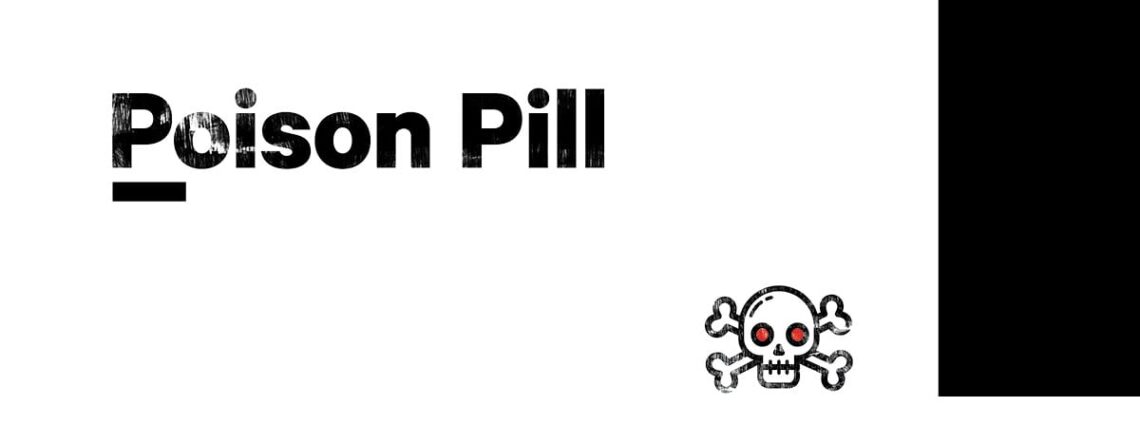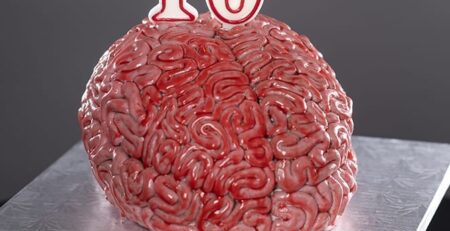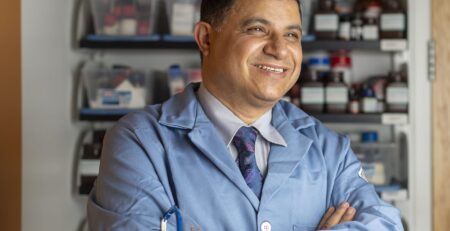Everyone knows smoking is terrible for your health, revving up your risk for a whole pack of diseases, including major killers like cancer, heart disease and stroke. Yet surprisingly, smoking seems to confer a degree of protection against other health problems.
Smokers don’t suffer as often from ulcerative colitis, a chronic disease that causes inflammation in the digestive tract. Statistical analyses also show that smokers are less likely to develop preeclampsia, a pregnancy complication characterized by high blood pressure and damage to other organs, most often the liver and kidneys.
Why would a cigarette habit, which has been shown to harm almost every organ and system in the body, offer even a modicum of benefit? It’s likely because smokers get extra exposure to carbon monoxide — a colorless, odorless gas that’s produced by the burning of just about any combustible material, including cigarettes. Although carbon monoxide can be toxic in large doses (you probably have a carbon monoxide detector blinking somewhere in your home), scientists have discovered it also can have positive effects, reducing inflammation and protecting cells against injury.
Although the curative powers of carbon monoxide have been demonstrated for nearly a century, experts have yet to create a drug that taps the molecule’s potential. That may one day change, thanks in large part to the work of Binghe Wang, Regents’ Professor of Chemistry and director of the Center for Diagnostics & Therapeutics, who is using chemistry to transform carbon monoxide gas into a form of precision medicine.
Wang has developed a unique way to safely deliver small amounts of the molecule to the exact place in the body it needs to go. So far, results suggest that his carbon monoxide-based medicines will one day be used to treat cancer, reduce the risk of complications after organ transplants and help repair tissue after a heart attack or traumatic brain injury.
Carbon monoxide gas was first discovered in the late 1700s, but it took more than 100 years for scientists to realize it could have the capacity to heal. Since then, research has been hindered by the gas’s noxious reputation.
“I’ve spent many, many years of time trying to convince people that it’s not just something to avoid,” says Leo Otterbein, one of the leading scientists studying carbon monoxide’s therapeutic uses and Wang’s frequent collaborator.
The earliest explanation of how carbon monoxide affects the body was published in 1865 by French physician and scientist Claude Bernard. He posited that carbon monoxide’s toxic effects occur when it combines with hemoglobin (a protein in red blood cells that carries oxygen throughout the body), displacing oxygen molecules and decreasing blood oxygen content. When people die of carbon monoxide poisoning, they’re really dying of oxygen starvation.
Yet there were also early hints that the molecule had beneficial effects. In 1932, a scientist named J. Argyll Campbell was trying to find a way to shrink tumors in rats. After he exposed the animals to carbon monoxide gas, he noticed the tumors got smaller. Unfortunately, instead of celebrating his findings as a treatment for cancer, he assumed the tumors were growing more slowly because the animals were suffering from carbon monoxide poisoning.
“Little did Campbell know the animals were fine,” says Otterbein, professor of surgery at Harvard Medical School and Beth Israel Deaconess Medical Center, who began studying carbon monoxide 20 years ago as a graduate student.
In one experiment in the late 1990s, Otterbein exposed a group of rats to lethal doses of oxygen and a second group to the same concentration of oxygen with a small amount of carbon monoxide gas blended in. Several days later, the rats who received carbon monoxide were the only ones still alive. Carbon monoxide appeared to trigger a protective response in the animals’ lungs. Around the same time, scientist Fritz Bach, a pioneer in transplant research, designed an experiment to test whether carbon monoxide could help prevent complications after organ transplants. During the study, researchers in his lab removed hearts from mice and transplanted them into rats, then exposed those rats to carbon monoxide gas.
“I was in touch with the post-doc, who would email me every day and let me know whether the mouse hearts were still beating,” says Otterbein. “In the rats that were exposed to normal air, the mouse hearts failed within five to seven days. Then came day eight, day 10, day 14, and the ones that were treated with carbon monoxide were still going.”
Another important breakthrough came in 1967, when Ronald Coburn, now emeritus professor of physiology at the University of Pennsylvania School of Medicine, showed that small amounts of carbon monoxide are actually formed inside the body during the breakdown of heme, an important compound in hemoglobin.
What’s more, the body seems to increase production of carbon monoxide as a defense against stressors. In the 2000s, English scientist Peter Barnes and his colleagues found the amount of carbon monoxide in the breath samples of patients suffering from sickle cell anemia, diabetes, asthma and heart disease to be much higher than that in healthy individuals. As the patients were treated and recovered, however, their carbon monoxide levels went down.
Yet despite mounting evidence of carbon monoxide’s promise as a therapy, researchers remained skeptical that most patients would agree to pump a poisonous gas into their lungs — even in controlled doses. Then in 2001, a pair of Italian scientists invented something called carbon monoxide releasing molecules, or CORMS, that could be administered orally. By delivering carbon monoxide via a molecule that could be swallowed, delivered intravenously or applied topically on the skin, the researchers felt they could overcome its negative stigma.
To create the molecules, they incorporated chemical elements called heavy metals.
“Carbon monoxide loves certain metals — like the iron in hemoglobin — and binds to them naturally,” says Wang. “It seemed like an effective way to deliver the molecule throughout the body.”
There was just one problem: Heavy metals can be toxic in large doses, and since the body has no way of getting rid of them, the more you take, the more they accumulate.
“It was a huge obstacle to developing a clinical application,” says Otterbein. “Then along comes Binghe, who says, ‘I have a solution. I have a new way to do this.’”
An
Unexpected
Cure
Some of the many health conditions that could be treated with a carbon monoxide-based medication
ORGAN TRANSPLANT COMPLICATIONS
After a transplant, there’s a risk the organ will fail or be rejected by the recipient’s body. Inflammation, which causes damage to tissues, is a major contributing factor. In animals, carbon monoxide has been widely tested in kidney, liver, heart and lung transplants and found to significantly improve outcomes. Studies have also found that exposing newly harvested organs to appropriate levels of carbon monoxide preserves the organs for longer periods of time.
ULCERATIVE COLITIS
This chronic disease causes inflammation and sores in the inner lining of the large intestine. Wang and other scientists have found that carbon monoxide, known to be a powerful anti-inflammatory, is an effective treatment.
SICKLE CELL DISEASE
A group of inherited disorders that predominantly affects African-Americans and people whose ancestors came from sub-Saharan Africa, sickle cell causes red blood cells to become hard, sticky and misshapen. Studies have found that carbon monoxide can help sickle cells become round again, reducing complications associated with the disease, which include reduced blood flow, infection and stroke.
TRAUMATIC BRAIN INJURY
A bump, blow or jolt to the head or a penetrating head injury can disrupt the normal function of the brain. Research suggests that carbon monoxide can be used to limit damage from brain injury in part by stimulating neurogenesis, or the growth of new nervous tissue.
HEART ISCHEMIA-REPERFUSION INJURY
Heart attacks occur when an artery that supplies oxygen- rich blood to the heart is blocked. But when the blockage is cleared, the sudden restoration of blood flow can result in additional tissue damage and inflammation, a complication known as ischemia-reperfusion injury. Studies have found that carbon monoxide tremendously reduces the injury by curbing inflammation and promoting tissue repair.
About five years ago, Wang was browsing through scientific literature and became intrigued when he learned what a toxic gas was doing in the human body.
“It was such a counterintuitive idea,” he says. “As a chemist, my curiosity was piqued.”
Wang dove into the existing research and came to believe carbon monoxide plays a very critical role in regulating normal physiological functions. Yet he also realized that there hadn’t been a real effort to design a safe, effective drug that could be used pharmaceutically.
“I saw so much potential in this small molecule,” says Wang, who in 2003 was named an Eminent Scholar in drug discovery by the Georgia Research Alliance, a nonprofit organization that coordinates research efforts between the state’s public universities and the private sector. “But there was a tremendous amount of medicinal chemistry that still needed to be done.”
At the time, there was no good way to deliver carbon monoxide to humans for therapeutic use. Inhaling the gas was practical only in well-controlled environments, such as hospitals. While the metal-based compounds were great research tools, their potential toxic effects posed many limitations. Other researchers had developed organic molecules that could release carbon monoxide — but only in the presence of light, which won’t work inside the human body.
Wang sought to design a way to turn the gaseous molecule into a pill that could be given precise doses, or dissolved in a solution for intravenous therapy or injection. The challenge required his team to invent new chemistry to “tether” carbon monoxide to a solid material that was safe for human consumption — and then break the tether on demand.
Using this new method, Wang has made different types of carbon monoxide “prodrugs”— inactive compounds that must undergo a chemical process in the body before releasing active pharmacological agents.
One prodrug starts releasing carbon monoxide once it reaches the bloodstream or the gastrointestinal system. Another prodrug will deliver carbon monoxide once it encounters a particular pH, a measure of the acidity or basicity of a solution. The prodrug is stable in the stomach, but once it gets into the lower gastrointestinal tract — where the pH is higher — the molecule is released.
A third prodrug system emits carbon monoxide in the presence of reactive oxygen species, unstable molecules that can bind to other molecules in the body and damage them. Elevated levels of reactive oxygen species are found in two types of tissues — inflamed tissues and cancerous tissues. Wang has found that carbon monoxide can make cancer cells more sensitive to traditional chemotherapeutic agents, improving the treatment’s effectiveness.
As a result, “doctors may be able to use lower doses of chemotherapy, which can be damaging to healthy cells as well as cancerous ones,” says Wang.
He and Otterbein have collaborated on several studies of the prodrugs. Wang develops the molecules and delivers them to Otterbein to research in animals.
“His way of packaging the molecules is unique,” says Otterbein. “The idea of a pill is not truly new, but he’s developed a way to create something that doesn’t have heavy metals and that will release carbon monoxide in specific places in the body. To be able to target the liver or the lung or the heart — that’s very, very powerful.”
They’re working on ways to use carbon monoxide in organ transplants, to reduce the risk of organ rejection or injury.
“We’ve known for years that carbon monoxide [gas] is very, very good for preventing organ rejection after transplant,” says Wang. “What we didn’t know is whether these molecules would have a similar effect.”
In a paper published in the Proceedings of the National Academy of Sciences in February, Wang and Otterbein were able to show that the molecules helped protect a transplanted kidney against injury. A more recent paper published in Nature Chemistry in May found the carbon monoxide prodrugs protected mice against acute liver failure.
“It was very potent, maybe 10 to 30 times more effective than traditional drug delivery,” says Wang.
Next, he plans to investigate whether carbon monoxide can be used to prevent chemotherapy- induced toxicity, harmful side effects to healthy cells caused by many chemotherapy drugs. Studies have found that the molecule can help minimize or eliminate the heart damage caused by chemotherapy, and Wang wants to know more.
“To take on something like this, which is an entirely new area that had not yet been explored, carries a lot of risk,” says Wang. “But that’s what makes it fun as well.”
Though a number of clinical trials involving carbon monoxide therapy have been completed and others are underway, the process of assessing safety and efficacy is a lengthy one. It could be years before a Food and Drug Administration-approved carbon monoxide treatment is available to patients. Still, Wang is determined to see his work make an impact.
“A lot of important discoveries end up sitting in academic papers without ever making the leap to a clinical setting,” says Wang. “Carbon monoxide’s potential has been known for decades, but we’re still trying to arrive at pharmaceuticals. My hope is that our research can speed up the process so that patients can finally benefit.”
Carbon monoxide gas was first discovered in the late 1700s, but it took more than 100 years for scientists to realize it could have the capacity to heal. Since then, research has been hindered by the gas’s noxious reputation.
“I’ve spent many, many years of time trying to convince people that it’s not just something to avoid,” says Leo Otterbein, one of the leading scientists studying carbon monoxide’s therapeutic uses and Wang’s frequent collaborator.
The earliest explanation of how carbon monoxide affects the body was published in 1865 by French physician and scientist Claude Bernard. He posited that carbon monoxide’s toxic effects occur when it combines with hemoglobin (a protein in red blood cells that carries oxygen throughout the body), displacing oxygen molecules and decreasing blood oxygen content. When people die of carbon monoxide poisoning, they’re really dying of oxygen starvation.
Yet there were also early hints that the molecule had beneficial effects. In 1932, a scientist named J. Argyll Campbell was trying to find a way to shrink tumors in rats. After he exposed the animals to carbon monoxide gas, he noticed the tumors got smaller. Unfortunately, instead of celebrating his findings as a treatment for cancer, he assumed the tumors were growing more slowly because the animals were suffering from carbon monoxide poisoning.
“Little did Campbell know the animals were fine,” says Otterbein, professor of surgery at Harvard Medical School and Beth Israel Deaconess Medical Center, who began studying carbon monoxide 20 years ago as a graduate student.
In one experiment in the late 1990s, Otterbein exposed a group of rats to lethal doses of oxygen and a second group to the same concentration of oxygen with a small amount of carbon monoxide gas blended in. Several days later, the rats who received carbon monoxide were the only ones still alive. Carbon monoxide appeared to trigger a protective response in the animals’ lungs. Around the same time, scientist Fritz Bach, a pioneer in transplant research, designed an experiment to test whether carbon monoxide could help prevent complications after organ transplants. During the study, researchers in his lab removed hearts from mice and transplanted them into rats, then exposed those rats to carbon monoxide gas.
“I was in touch with the post-doc, who would email me every day and let me know whether the mouse hearts were still beating,” says Otterbein. “In the rats that were exposed to normal air, the mouse hearts failed within five to seven days. Then came day eight, day 10, day 14, and the ones that were treated with carbon monoxide were still going.”
Another important breakthrough came in 1967, when Ronald Coburn, now emeritus professor of physiology at the University of Pennsylvania School of Medicine, showed that small amounts of carbon monoxide are actually formed inside the body during the breakdown of heme, an important compound in hemoglobin.
What’s more, the body seems to increase production of carbon monoxide as a defense against stressors. In the 2000s, English scientist Peter Barnes and his colleagues found the amount of carbon monoxide in the breath samples of patients suffering from sickle cell anemia, diabetes, asthma and heart disease to be much higher than that in healthy individuals. As the patients were treated and recovered, however, their carbon monoxide levels went down.
Yet despite mounting evidence of carbon monoxide’s promise as a therapy, researchers remained skeptical that most patients would agree to pump a poisonous gas into their lungs — even in controlled doses. Then in 2001, a pair of Italian scientists invented something called carbon monoxide releasing molecules, or CORMS, that could be administered orally. By delivering carbon monoxide via a molecule that could be swallowed, delivered intravenously or applied topically on the skin, the researchers felt they could overcome its negative stigma.
To create the molecules, they incorporated chemical elements called heavy metals.
“Carbon monoxide loves certain metals — like the iron in hemoglobin — and binds to them naturally,” says Wang. “It seemed like an effective way to deliver the molecule throughout the body.”
There was just one problem: Heavy metals can be toxic in large doses, and since the body has no way of getting rid of them, the more you take, the more they accumulate.
“It was a huge obstacle to developing a clinical application,” says Otterbein. “Then along comes Binghe, who says, ‘I have a solution. I have a new way to do this.’”
An Unexpected Cure
Some of the many health conditions that could be treated with a carbon monoxide-based medication
ORGAN TRANSPLANT COMPLICATIONS
After a transplant, there’s a risk the organ will fail or be rejected by the recipient’s body. Inflammation, which causes damage to tissues, is a major contributing factor. In animals, carbon monoxide has been widely tested in kidney, liver, heart and lung transplants and found to significantly improve outcomes. Studies have also found that exposing newly harvested organs to appropriate levels of carbon monoxide preserves the organs for longer periods of time.
ULCERATIVE COLITIS
This chronic disease causes inflammation and sores in the inner lining of the large intestine. Wang and other scientists have found that carbon monoxide, known to be a powerful anti-inflammatory, is an effective treatment.
SICKLE CELL DISEASE
A group of inherited disorders that predominantly affects African-Americans and people whose ancestors came from sub-Saharan Africa, sickle cell causes red blood cells to become hard, sticky and misshapen. Studies have found that carbon monoxide can help sickle cells become round again, reducing complications associated with the disease, which include reduced blood flow, infection and stroke.
TRAUMATIC BRAIN INJURY
A bump, blow or jolt to the head or a penetrating head injury can disrupt the normal function of the brain. Research suggests that carbon monoxide can be used to limit damage from brain injury in part by stimulating neurogenesis, or the growth of new nervous tissue.
HEART ISCHEMIA-REPERFUSION INJURY
Heart attacks occur when an artery that supplies oxygen- rich blood to the heart is blocked. But when the blockage is cleared, the sudden restoration of blood flow can result in additional tissue damage and inflammation, a complication known as ischemia-reperfusion injury. Studies have found that carbon monoxide tremendously reduces the injury by curbing inflammation and promoting tissue repair.
About five years ago, Wang was browsing through scientific literature and became intrigued when he learned what a toxic gas was doing in the human body.
“It was such a counterintuitive idea,” he says. “As a chemist, my curiosity was piqued.”
Wang dove into the existing research and came to believe carbon monoxide plays a very critical role in regulating normal physiological functions. Yet he also realized that there hadn’t been a real effort to design a safe, effective drug that could be used pharmaceutically.
“I saw so much potential in this small molecule,” says Wang, who in 2003 was named an Eminent Scholar in drug discovery by the Georgia Research Alliance, a nonprofit organization that coordinates research efforts between the state’s public universities and the private sector. “But there was a tremendous amount of medicinal chemistry that still needed to be done.”
At the time, there was no good way to deliver carbon monoxide to humans for therapeutic use. Inhaling the gas was practical only in well-controlled environments, such as hospitals. While the metal-based compounds were great research tools, their potential toxic effects posed many limitations. Other researchers had developed organic molecules that could release carbon monoxide — but only in the presence of light, which won’t work inside the human body.
Wang sought to design a way to turn the gaseous molecule into a pill that could be given precise doses, or dissolved in a solution for intravenous therapy or injection. The challenge required his team to invent new chemistry to “tether” carbon monoxide to a solid material that was safe for human consumption — and then break the tether on demand.
Using this new method, Wang has made different types of carbon monoxide “prodrugs”— inactive compounds that must undergo a chemical process in the body before releasing active pharmacological agents.
One prodrug starts releasing carbon monoxide once it reaches the bloodstream or the gastrointestinal system. Another prodrug will deliver carbon monoxide once it encounters a particular pH, a measure of the acidity or basicity of a solution. The prodrug is stable in the stomach, but once it gets into the lower gastrointestinal tract — where the pH is higher — the molecule is released.
A third prodrug system emits carbon monoxide in the presence of reactive oxygen species, unstable molecules that can bind to other molecules in the body and damage them. Elevated levels of reactive oxygen species are found in two types of tissues — inflamed tissues and cancerous tissues. Wang has found that carbon monoxide can make cancer cells more sensitive to traditional chemotherapeutic agents, improving the treatment’s effectiveness.
As a result, “doctors may be able to use lower doses of chemotherapy, which can be damaging to healthy cells as well as cancerous ones,” says Wang.
He and Otterbein have collaborated on several studies of the prodrugs. Wang develops the molecules and delivers them to Otterbein to research in animals.
“His way of packaging the molecules is unique,” says Otterbein. “The idea of a pill is not truly new, but he’s developed a way to create something that doesn’t have heavy metals and that will release carbon monoxide in specific places in the body. To be able to target the liver or the lung or the heart — that’s very, very powerful.”
They’re working on ways to use carbon monoxide in organ transplants, to reduce the risk of organ rejection or injury.
“We’ve known for years that carbon monoxide [gas] is very, very good for preventing organ rejection after transplant,” says Wang. “What we didn’t know is whether these molecules would have a similar effect.”
In a paper published in the Proceedings of the National Academy of Sciences in February, Wang and Otterbein were able to show that the molecules helped protect a transplanted kidney against injury. A more recent paper published in Nature Chemistry in May found the carbon monoxide prodrugs protected mice against acute liver failure.
“It was very potent, maybe 10 to 30 times more effective than traditional drug delivery,” says Wang.
Next, he plans to investigate whether carbon monoxide can be used to prevent chemotherapy- induced toxicity, harmful side effects to healthy cells caused by many chemotherapy drugs. Studies have found that the molecule can help minimize or eliminate the heart damage caused by chemotherapy, and Wang wants to know more.
“To take on something like this, which is an entirely new area that had not yet been explored, carries a lot of risk,” says Wang. “But that’s what makes it fun as well.”
Though a number of clinical trials involving carbon monoxide therapy have been completed and others are underway, the process of assessing safety and efficacy is a lengthy one. It could be years before a Food and Drug Administration-approved carbon monoxide treatment is available to patients. Still, Wang is determined to see his work make an impact.
“A lot of important discoveries end up sitting in academic papers without ever making the leap to a clinical setting,” says Wang. “Carbon monoxide’s potential has been known for decades, but we’re still trying to arrive at pharmaceuticals. My hope is that our research can speed up the process so that patients can finally benefit.”

Carbon monoxide gas was first discovered in the late 1700s, but it took more than 100 years for scientists to realize it could have the capacity to heal. Since then, research has been hindered by the gas’s noxious reputation.
“I’ve spent many, many years of time trying to convince people that it’s not just something to avoid,” says Leo Otterbein, one of the leading scientists studying carbon monoxide’s therapeutic uses and Wang’s frequent collaborator.

The earliest explanation of how carbon monoxide affects the body was published in 1865 by French physician and scientist Claude Bernard. He posited that carbon monoxide’s toxic effects occur when it combines with hemoglobin (a protein in red blood cells that carries oxygen throughout the body), displacing oxygen molecules and decreasing blood oxygen content. When people die of carbon monoxide poisoning, they’re really dying of oxygen starvation.
Yet there were also early hints that the molecule had beneficial effects. In 1932, a scientist named J. Argyll Campbell was trying to find a way to shrink tumors in rats. After he exposed the animals to carbon monoxide gas, he noticed the tumors got smaller. Unfortunately, instead of celebrating his findings as a treatment for cancer, he assumed the tumors were growing more slowly because the animals were suffering from carbon monoxide poisoning.
“Little did Campbell know the animals were fine,” says Otterbein, professor of surgery at Harvard Medical School and Beth Israel Deaconess Medical Center, who began studying carbon monoxide 20 years ago as a graduate student.

In one experiment in the late 1990s, Otterbein exposed a group of rats to lethal doses of oxygen and a second group to the same concentration of oxygen with a small amount of carbon monoxide gas blended in. Several days later, the rats who received carbon monoxide were the only ones still alive. Carbon monoxide appeared to trigger a protective response in the animals’ lungs. Around the same time, scientist Fritz Bach, a pioneer in transplant research, designed an experiment to test whether carbon monoxide could help prevent complications after organ transplants. During the study, researchers in his lab removed hearts from mice and transplanted them into rats, then exposed those rats to carbon monoxide gas.
“I was in touch with the post-doc, who would email me every day and let me know whether the mouse hearts were still beating,” says Otterbein. “In the rats that were exposed to normal air, the mouse hearts failed within five to seven days. Then came day eight, day 10, day 14, and the ones that were treated with carbon monoxide were still going.”
Another important breakthrough came in 1967, when Ronald Coburn, now emeritus professor of physiology at the University of Pennsylvania School of Medicine, showed that small amounts of carbon monoxide are actually formed inside the body during the breakdown of heme, an important compound in hemoglobin.
What’s more, the body seems to increase production of carbon monoxide as a defense against stressors. In the 2000s, English scientist Peter Barnes and his colleagues found the amount of carbon monoxide in the breath samples of patients suffering from sickle cell anemia, diabetes, asthma and heart disease to be much higher than that in healthy individuals. As the patients were treated and recovered, however, their carbon monoxide levels went down.

Yet despite mounting evidence of carbon monoxide’s promise as a therapy, researchers remained skeptical that most patients would agree to pump a poisonous gas into their lungs — even in controlled doses. Then in 2001, a pair of Italian scientists invented something called carbon monoxide releasing molecules, or CORMS, that could be administered orally. By delivering carbon monoxide via a molecule that could be swallowed, delivered intravenously or applied topically on the skin, the researchers felt they could overcome its negative stigma.
To create the molecules, they incorporated chemical elements called heavy metals.
“Carbon monoxide loves certain metals — like the iron in hemoglobin — and binds to them naturally,” says Wang. “It seemed like an effective way to deliver the molecule throughout the body.”
There was just one problem: Heavy metals can be toxic in large doses, and since the body has no way of getting rid of them, the more you take, the more they accumulate.
“It was a huge obstacle to developing a clinical application,” says Otterbein. “Then along comes Binghe, who says, ‘I have a solution. I have a new way to do this.’”
An Unexpected Cure
Some of the many health conditions that could be treated with a carbon monoxide-based medication
ORGAN TRANSPLANT COMPLICATIONS
After a transplant, there’s a risk the organ will fail or be rejected by the recipient’s body. Inflammation, which causes damage to tissues, is a major contributing factor. In animals, carbon monoxide has been widely tested in kidney, liver, heart and lung transplants and found to significantly improve outcomes. Studies have also found that exposing newly harvested organs to appropriate levels of carbon monoxide preserves the organs for longer periods of time.
ULCERATIVE COLITIS
This chronic disease causes inflammation and sores in the inner lining of the large intestine. Wang and other scientists have found that carbon monoxide, known to be a powerful anti-inflammatory, is an effective treatment.
SICKLE CELL DISEASE
A group of inherited disorders that predominantly affects African-Americans and people whose ancestors came from sub-Saharan Africa, sickle cell causes red blood cells to become hard, sticky and misshapen. Studies have found that carbon monoxide can help sickle cells become round again, reducing complications associated with the disease, which include reduced blood flow, infection and stroke.
TRAUMATIC BRAIN INJURY
A bump, blow or jolt to the head or a penetrating head injury can disrupt the normal function of the brain. Research suggests that carbon monoxide can be used to limit damage from brain injury in part by stimulating neurogenesis, or the growth of new nervous tissue.
HEART ISCHEMIA-REPERFUSION INJURY
Heart attacks occur when an artery that supplies oxygen- rich blood to the heart is blocked. But when the blockage is cleared, the sudden restoration of blood flow can result in additional tissue damage and inflammation, a complication known as ischemia-reperfusion injury. Studies have found that carbon monoxide tremendously reduces the injury by curbing inflammation and promoting tissue repair.

About five years ago, Wang was browsing through scientific literature and became intrigued when he learned what a toxic gas was doing in the human body.
“It was such a counterintuitive idea,” he says. “As a chemist, my curiosity was piqued.”
Wang dove into the existing research and came to believe carbon monoxide plays a very critical role in regulating normal physiological functions. Yet he also realized that there hadn’t been a real effort to design a safe, effective drug that could be used pharmaceutically.
“I saw so much potential in this small molecule,” says Wang, who in 2003 was named an Eminent Scholar in drug discovery by the Georgia Research Alliance, a nonprofit organization that coordinates research efforts between the state’s public universities and the private sector. “But there was a tremendous amount of medicinal chemistry that still needed to be done.”

At the time, there was no good way to deliver carbon monoxide to humans for therapeutic use. Inhaling the gas was practical only in well-controlled environments, such as hospitals. While the metal-based compounds were great research tools, their potential toxic effects posed many limitations. Other researchers had developed organic molecules that could release carbon monoxide — but only in the presence of light, which won’t work inside the human body.
Wang sought to design a way to turn the gaseous molecule into a pill that could be given precise doses, or dissolved in a solution for intravenous therapy or injection. The challenge required his team to invent new chemistry to “tether” carbon monoxide to a solid material that was safe for human consumption — and then break the tether on demand.

Using this new method, Wang has made different types of carbon monoxide “prodrugs”— inactive compounds that must undergo a chemical process in the body before releasing active pharmacological agents.
One prodrug starts releasing carbon monoxide once it reaches the bloodstream or the gastrointestinal system. Another prodrug will deliver carbon monoxide once it encounters a particular pH, a measure of the acidity or basicity of a solution. The prodrug is stable in the stomach, but once it gets into the lower gastrointestinal tract — where the pH is higher — the molecule is released.
A third prodrug system emits carbon monoxide in the presence of reactive oxygen species, unstable molecules that can bind to other molecules in the body and damage them. Elevated levels of reactive oxygen species are found in two types of tissues — inflamed tissues and cancerous tissues. Wang has found that carbon monoxide can make cancer cells more sensitive to traditional chemotherapeutic agents, improving the treatment’s effectiveness.
As a result, “doctors may be able to use lower doses of chemotherapy, which can be damaging to healthy cells as well as cancerous ones,” says Wang.

He and Otterbein have collaborated on several studies of the prodrugs. Wang develops the molecules and delivers them to Otterbein to research in animals.
“His way of packaging the molecules is unique,” says Otterbein. “The idea of a pill is not truly new, but he’s developed a way to create something that doesn’t have heavy metals and that will release carbon monoxide in specific places in the body. To be able to target the liver or the lung or the heart — that’s very, very powerful.”
They’re working on ways to use carbon monoxide in organ transplants, to reduce the risk of organ rejection or injury.
“We’ve known for years that carbon monoxide [gas] is very, very good for preventing organ rejection after transplant,” says Wang. “What we didn’t know is whether these molecules would have a similar effect.”

In a paper published in the Proceedings of the National Academy of Sciences in February, Wang and Otterbein were able to show that the molecules helped protect a transplanted kidney against injury. A more recent paper published in Nature Chemistry in May found the carbon monoxide prodrugs protected mice against acute liver failure.
“It was very potent, maybe 10 to 30 times more effective than traditional drug delivery,” says Wang.

Next, he plans to investigate whether carbon monoxide can be used to prevent chemotherapy- induced toxicity, harmful side effects to healthy cells caused by many chemotherapy drugs. Studies have found that the molecule can help minimize or eliminate the heart damage caused by chemotherapy, and Wang wants to know more.
“To take on something like this, which is an entirely new area that had not yet been explored, carries a lot of risk,” says Wang. “But that’s what makes it fun as well.”

Though a number of clinical trials involving carbon monoxide therapy have been completed and others are underway, the process of assessing safety and efficacy is a lengthy one. It could be years before a Food and Drug Administration-approved carbon monoxide treatment is available to patients. Still, Wang is determined to see his work make an impact.
“A lot of important discoveries end up sitting in academic papers without ever making the leap to a clinical setting,” says Wang. “Carbon monoxide’s potential has been known for decades, but we’re still trying to arrive at pharmaceuticals. My hope is that our research can speed up the process so that patients can finally benefit.”
Pick Your Poison
Three other toxic substances with lifesaving applications
ARSENIC
On the big screen, it’s been used to murder countless no-good husbands and inheritance-hoarding relatives, but arsenic also plays a key role in cell growth and reproduction. In the 1930s, arsenic was shown to be effective against chronic myelogenous leukemia, a type of blood cell cancer that most often affects older adults. Today arsenic trioxide, an FDA-approved chemotherapy drug derived from arsenic, works by slowing or stopping tumor growth.
MUSTARD GAS
Nitrogen mustard gas was stockpiled by several nations during World War II to be deployed as chemical warfare agents, but it was never used in combat. Yet its discovery also opened a new era in cancer chemotherapy. Nitrogen mustard, now a FDA-approved cancer treatment, binds to the DNA of tumor cells, preventing replication and leading to cell death.
VENOM
Though it’s not yet an approved treatment, snake venom contains compounds that may bind to the membranes of cancer cell, interfering with their ability to multiply and spread throughout the body. The diabetes drug exenatide uses a synthetic form of proteins extracted from the venom of Gila monsters.
Illustrated by William Davis












Leave a Reply